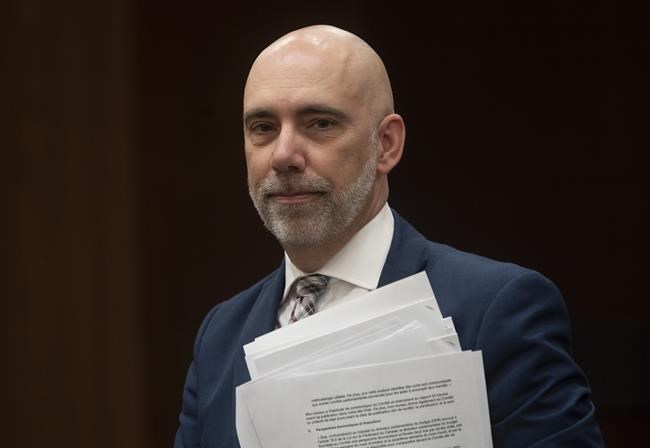OTTAWA — The federal deficit could be on track to hit $256 billion this fiscal year due to the COVID-19 pandemic, Parliament's budget watchdog says in a new estimate that doesn't account for this week's extension to a cornerstone benefit for workers.
Budget officer Yves Giroux's report said the deficit estimate is the combination of a projected $169 billion in federal spending on emergency aid and a historic drop in economic output.
The overall deficit figure is only $3.8 billion higher than Giroux's office previously predicted despite some major new government spending plans, which his report says is due to a better economic outlook for the second half of the year.
But the figures don't include the extra cost for a promised extension of the Canada Emergency Response Benefit to provide eight more weeks of payments to recipients about to hit the current 16-week maximum, nor the possible cost to make some of the measures permanent.
Giroux also warned that spending could go up further if the government pumps more stimulus to promote economic recovery, beyond the $14 billion the Liberals have promised to provinces to help minimize the risks in reopening workplaces.
Possible changes and uncertainty about the course of the pandemic led Giroux to stress that the figures in his report are the outcome of one of many possible scenarios and not a certain forecast.
The report comes one day after Prime Minister Justin Trudeau promised to deliver a "snapshot" of federal finances on July 8 that will provide short-term spending estimates.
Trudeau warned the document won't provide a longer-term outlook because of uncertainty about where the economy will go in the coming months and years — all of which rests on the path of the pandemic.
The budget office estimates the economy could shrink by 6.8 per cent in 2020, the weakest showing since 1981 and double the record of 3.2 per cent shrinkage in 1982.
Previously, Giroux estimated the economy could shrink by 12 per cent in 2020.
The Liberals have been under pressure from opposition parties to release a fiscal update or a full 2020 budget. The government had originally planned to release a budget in late March but shelved it when COVID-19 hit.
Since then, MPs have approved massive emergency spending on aid to Canadians who have lost their jobs or had their hours slashed, and financing to businesses shuttered due to public health restrictions.
The latest figures from the Finance Department peg the total package of pandemic-related aid at $153.7 billion in direct spending, but Giroux estimates the price tag will be closer to $169 billion at this point.
That's about half what the federal government spends in a normal year.
The budget office now estimates the $2,000-a-month CERB will cost the government $61.1 billion — just above the $60 billion budgeted by the government as demand soared — but pull $7.7 billion back in when recipients are taxed on the income next year.
When the Finance Department increased the estimated cost of the CERB, it also lowered the cost for a wage-subsidy program for private employers from to $45 billion from $73 billion based on the take-up rate among businesses.
Giroux's office estimates the wage subsidy to cost the treasury $55.6 billion, though it warns the figure depends heavily on how businesses respond as they're allowed to reopen.
In a speech Thursday, a senior Bank of Canada official noted that federal spending measures should continue to buffer income losses and support household spending during the early stages of the economic recovery.
Deputy governor Lawrence Schembri in a videoconference speech said that a forthcoming survey of consumer expectations will show that respondents receiving federal support have spent or expect to spend on average 70 per cent of their benefits.
The text of his speech released by the bank notes that recent data indicate a recovery is underway, with a first phase being sharp and short, followed by a longer "recuperation" period influenced by the course of the pandemic.
This report by The Canadian Press was first published June 18, 2020.
The Canadian Press

